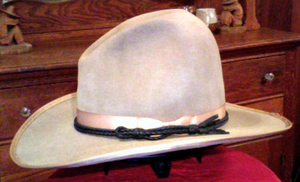Raynaud’s Syndrome, a condition suffered by nearly 10% of the population is more than a simple case of cold hands. Named after a young French doctor practicing in the 1850s, this syndrome can affect the fingers, toes, face, and ears. It is a dangerous condition that stems from an overactive sympathetic nervous response to cold. It is an exaggeration of the normal physiological response to cold where warm blood is shunted to the internal organs. In a normal situation blood flow to the extremities is minimized but not to the point of compromising the health of the tissues in that area. In the case of Raynaud’s Syndrome, however, the subsequent restriction in blood flow to the extremities triggers a spasm in the arteriole muscles causing a dangerous constriction of blood flow to the area. The condition can range from mildly uncomfortable to highly dangerous. In severe cases, the threat of gangrene is significant.
This painful condition typically starts during the teenage years and affects nine times as many women as men. When the condition occurs spontaneously without an underlying health problem it is referred to as Primary Raynaud’s Syndrome. Secondary Raynaud’s is less common, usually starts later in life, and is typically a symptom of some other condition such as scleroderma, systemic Lupus, and the use of agitating tools like a jack-hammers.
Oddly enough it does not necessarily have to be cold out to trigger an episode. A simple change of temperature or touching a cold object can cause a dangerous spasm. Smoking and emotional stress may cause an episode or merely exacerbate the situation.
A typical episode will cause the affected area to turn cold and feel numb. A white or blueish cast will cause the area to look like marble before turning red with a burning, throbbing sensation. The area may feel leaden and clumsy. It may tingle and even swell and be very painful. Aside from the pain, the situation can be tragically threatening. Lack of blood supply to the affected area can cause ulcers (open skin sores) and necrosis (deadening tissue deep under the skin). If left untreated, both cases can turn into gangrene, often requiring surgical intervention.
While there is much left to be studied about this medical enigma, great strides are being made to help sufferers. Biofeedback appears to be the most promising avenue. A variety of exercises have been designed using biofeedback to train the body to release the spasm and even retrain the body’s physiological reaction to cold, stopping the spasm before it starts.
The Raynaud’s Association has also found the following practices to be helpful: avoiding caffeinated beverages, alcohol and nicotine, as they are all vasoconstrictors; and keeping skin clean, dry and well moisturized; avoiding drafts and sudden changes in temperature when possible and keeping the entire body warm at all times. Special care should be taken to keep the core of the body warm, as a drop in temperature there is what causes warm blood to be diverted in the first place. If an episode does start, move to a warmer area, or find a way to warm the affected area by using heat packs, body heat, and movement. Again, warming the core body may help to open the spasm by releasing blood flow to the entire body. Oxygen is very important when recovering from an episode as the area has been deprived of an adequate supply from the time the spasm initially started. Deep breathing and movement will flood the area with warm, oxygen-carrying blood, reviving the tissue rapidly.
If you think you may suffer from this condition, the threat is real-it is often hard to describe or explain to your doctor and there is no test for it other than trying to recreate it. When you have an episode, take pictures and write down a detailed description of when it happened, what may have triggered it, and how it felt. Take note of how it progressed, when it went away, and possible things that made it go away. It will be useful to remember how it felt after the episode resolved itself as well as how long before the area felt normal again.
It is important to remember that just because you have cold hands doesn’t mean you suffer from Raynaud’s Syndrome. Vascular and circulatory issues can often cause extremities to feel cold. Diet and fitness level can also have an effect. Many people suffer from the chill of winter simply due to their inability to process fats properly. A change in diet that alters the source of daily fats and digestive enzymes can often help.
If Jack Frost is causing more than just a nip it is worth looking into. The Raynaud’s Association (www.raynauds.org) is an excellent resource and can help to guide you in your quest for answers. Remember, you don’t need to have cold hands to have a warm heart.
Reference:
- Raynaud’s Association: www.raynauds.org, Arthritis Society: www.arthritis.ca, National Institute of Arthritis and Musculoskeletal and Skin Diseases: www.niams.nih.gov/hi/topics/raynaud/ar125fs.htm, Universtiy of Virginia: www.healthsystem.virginia.edu/internet/rheumatology/raynauds.cfm, MedicineNet: www.medicinenet.com/raynauds_phenomenon/article.htm, Canadian Center for Occupational Health and Safety: www.ccohs.ca/oshanswers/diseases/raynaud.html, Mayo Clinic: www.mayoclinic.com, ; Ed McCable: www.oxygenhealth.com







